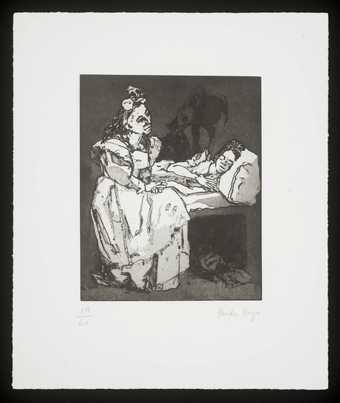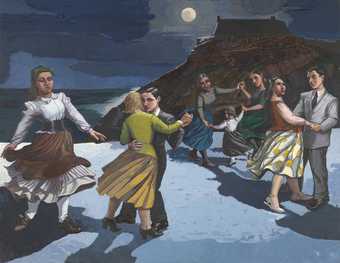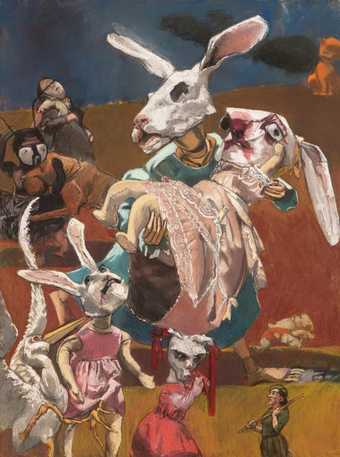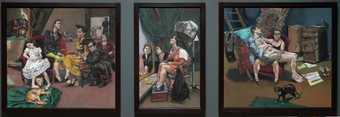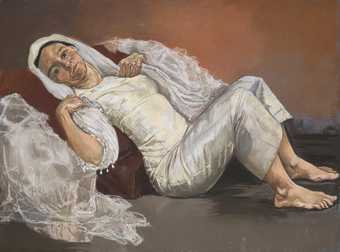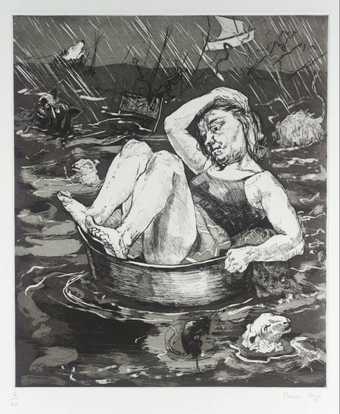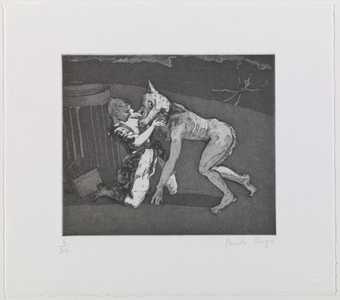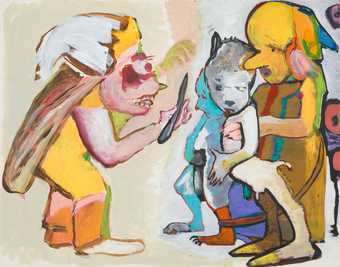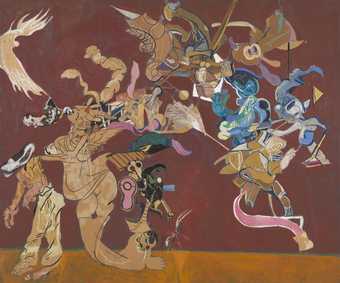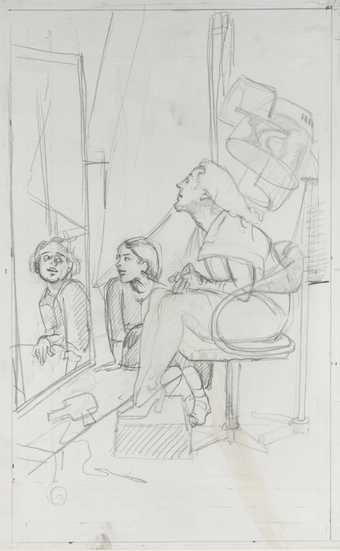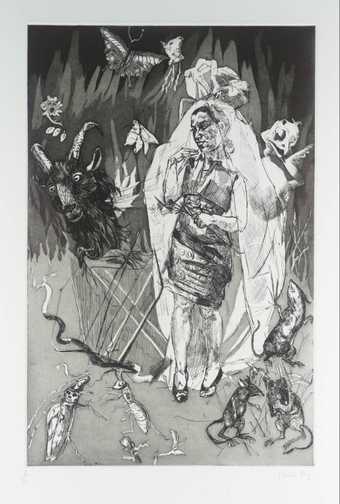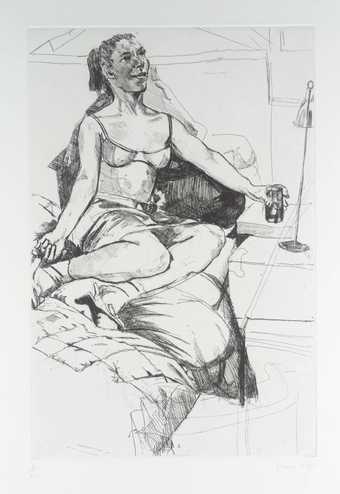TateShots was invited to observe Paula Rego and the team at The Curwen Studio in Cambridgeshire as they set about turning one of her drawings into an editioned print. Our film captures Rego at work and she tells us why drawing and printmaking is so important to her practice.
[Paula] We are in the Curwen Studio in Chilford near Cambridge. We’re here to make some prints, and everybody who works here are wonderfully helpful and good at what they do, and they know what they’re doing. [Tom] I’m Tom Martin and I’m studio manager, senior printmaker at the Curwen Studio and we print artists’ original prints for them. Today we’re working with Paula Rego and she’s come with a transfer drawing and she’s actually drawn from models, still life arrangements in her studio, and she has used a special lithographic crayon which is very, very greasy and that’s really important for the process to work. [Paula] All printmaking is to do with drawing if you do it directly and it’s what I like to do. I love to draw. When I was at the Slade I took refuge in the print room because in the print room you can draw images quickly so I’ve always found relief and release in being able to do images more quickly. [Tom] The first step is to actually transfer her drawing to a zinc plate which has a prepared texture to it, like a sort of granular surface. Once it’s completed and the drawing is on the plate we then carefully prepare the drawn image so that it’s printable. [Paula] You can see it’s coming up even better. Even the boots are better now. [Tom] She’s a really good artist to work with and is very expressive of what she wants and you become very included in the process which is nice for Paula, so you’re as much part of it as she is really. I think it’s working better. [Paula] It is working. It’s working. I don’t want it to be any thicker than that. Even that’s come out quite strong in all. That’s it. You don’t want to even re-draw it really. [Tom] The next step, Paula is going to draw on a sheet of drafting film which is a bit like tracing paper really, the plastic version, and she will paint onto that piece of film wherever the colour she wants to appear on the print. Then that film is then exposed on to a light sensitive plate with a UV light. Wherever the light hits the bare plate it sort of chemically changes the surface. Whatever’s underneath the drawing remains untouched by the light. So when you develop it everything drops off that’s been touched by the light and everything remains where the drawing is. And it’s very, very accurate. It kind of replicates her drawn mark really properly. It is then put back on to the press, and we’ve hand mixed a specific colour which Paula has requested, sort of a very light bloody coloured tint almost, so it’s a very transparent colour made of red and yellow and brown, and then that’s run the same way as the black plate was and then it’s printed on top of the proofs that we worked on earlier. So, again, it takes a bit of time. Sometimes the colour’s a bit wrong and you have to adjust it. [Paula] Put it up, put it up, let’s have a look. Yep, that’s it. [Tom] Yeah, it looks good doesn’t it? [Paula] Eh? [Tom] It works really well. [Paula] Yeah. [Tom] Yeah. [Paula] I was told that the unicorn was the symbol of the Curwen Gallery. I didn’t know that. And so I thought what am I going to do with a unicorn. So I did get this little one which is just a head on a stick for children to ride and I improvised a story with it that he’s drawing on the stone that one of the girls is holding. I like the incisiveness of the drawing. It’s extremely physical and your contact with the surface is hard and decisive. Pictures tell stories but not sometimes in a very straight forward way, and you might start with one story and finish up with a different one, and sometimes the one you finish up with is the opposite of the one you began with so your whole feelings … all your feelings … you have to trust the picture because it’s the picture that you’re doing that is telling you what’s inside you, and what you really feel sometimes ain’t very nice. And then you discover at the end who you are.

